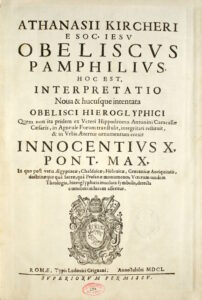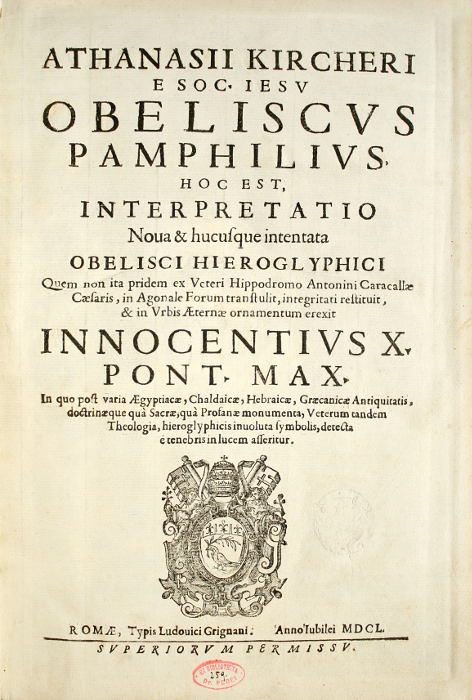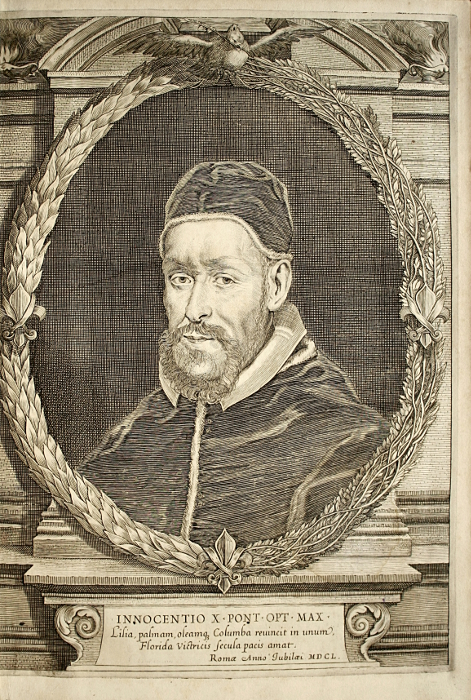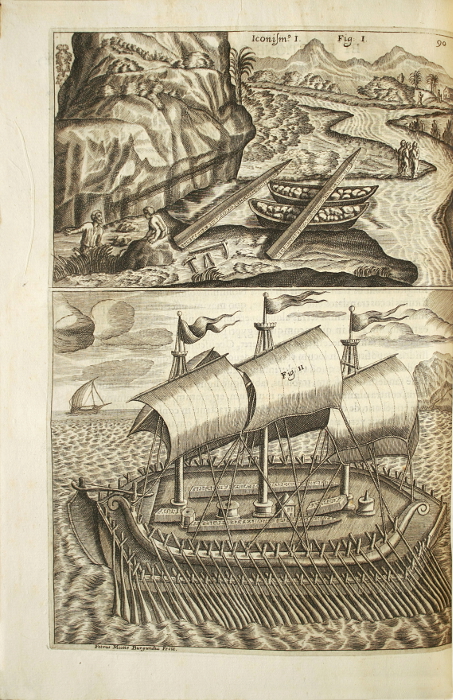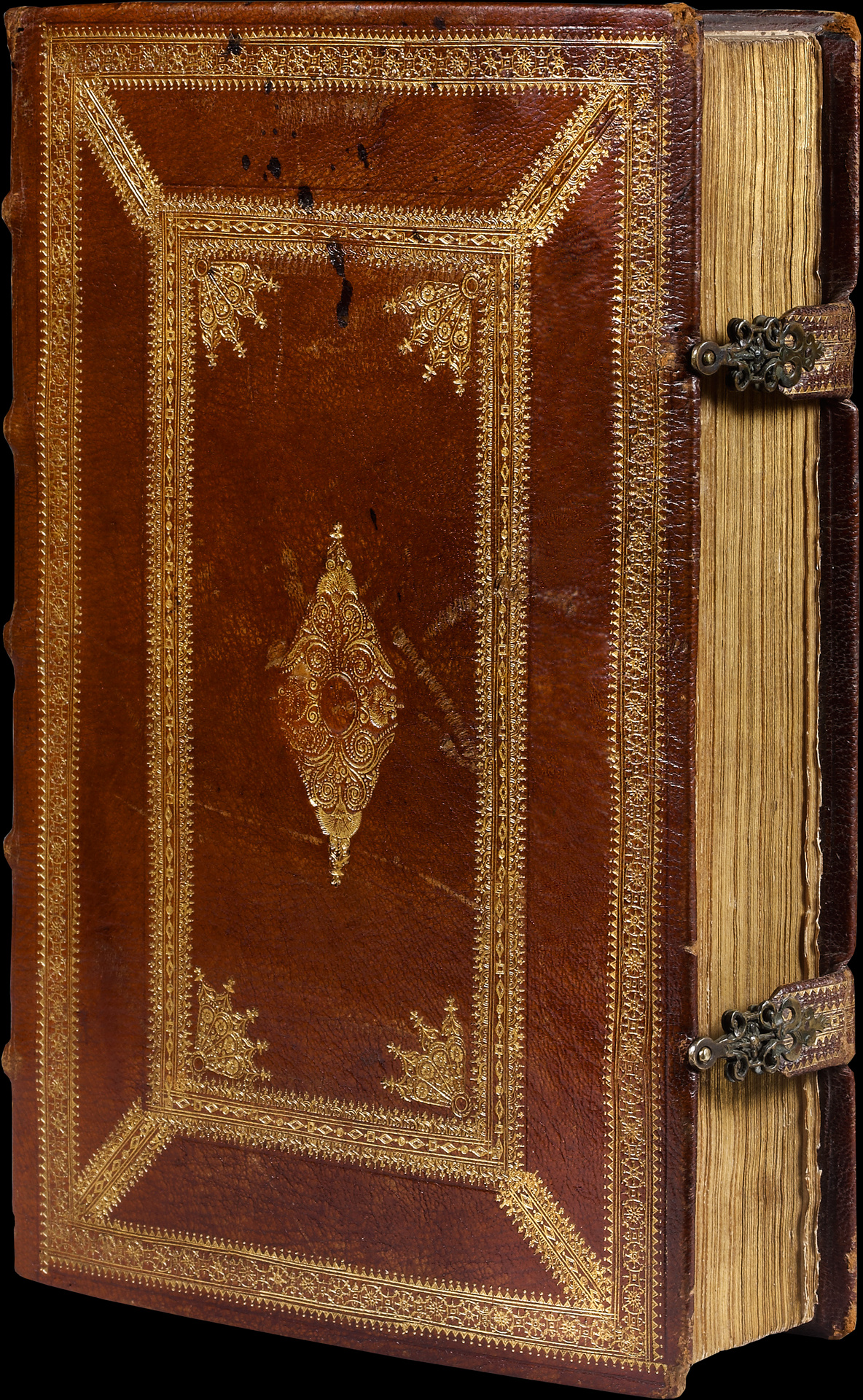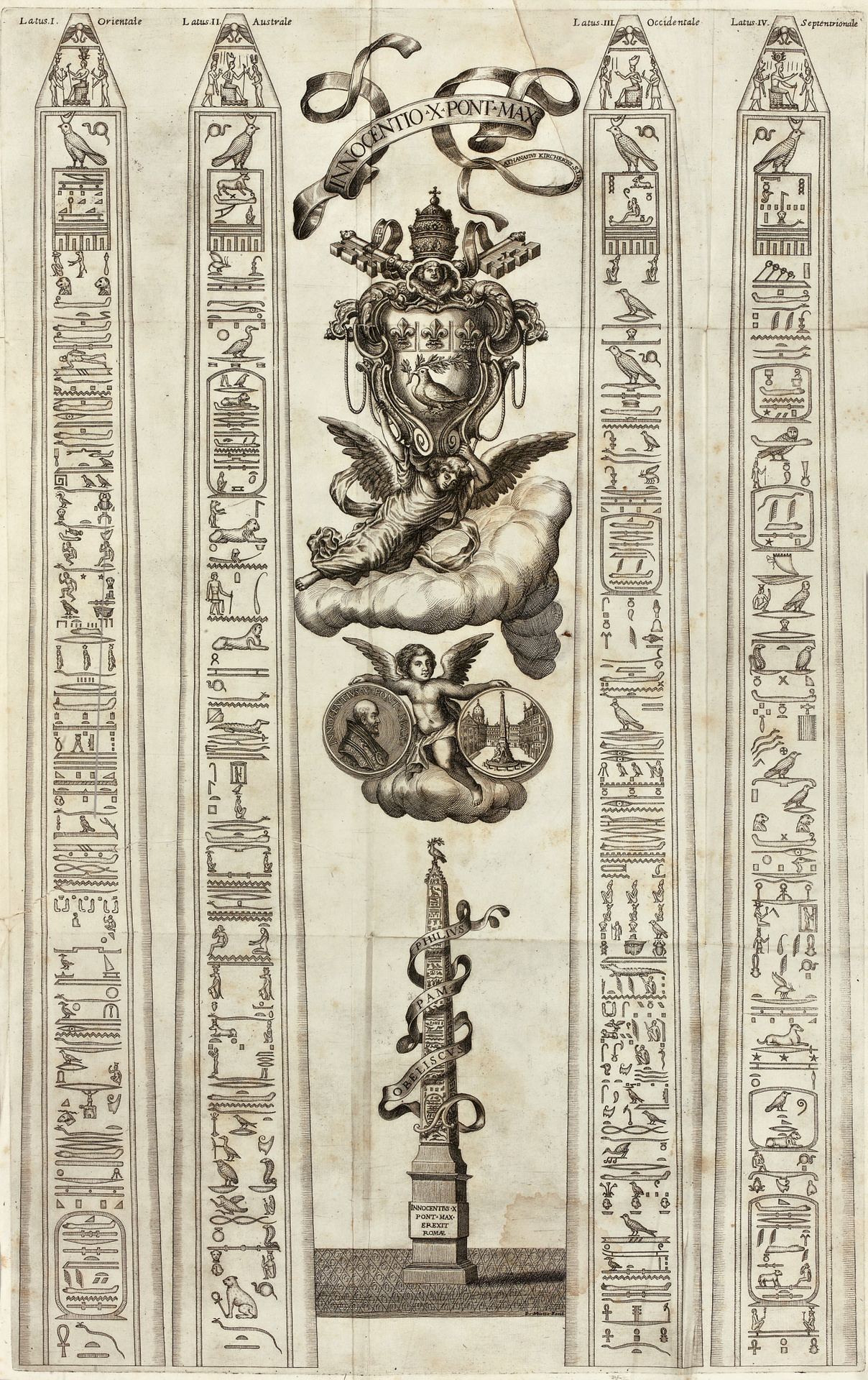Rome, Ludovici Grignani, 1650.
Folio [320 x 215 mm] of (32) ll., 560 pp., (15) ll., 1 large folding plate formerly restored without loss, 1 portrait, 1 frontispiece and 7 full page plates. Bound in contemporary brown morocco over wooden boards, covers richly decorated with a gilt dentelle double frame and a central fleuron, spine ribbed and decorated with heart-shaped gilt fleurons, engraved clasps, gilt edges. Bottom of the spine worn. Contemporary Roman binding.
First edition of the first complete account by Kircher of his theory of transcription of Egyptian hieroglyphs. Avery Architectural Library, p.529; Caillet, Manuel bibliographique des sciences psychiques, n°5787; Brunet, III, 668; Graesse, Trésor de livres rares, IV, p. 22; De Backer-Sommervogel, IV, 1052.
In the present work, Father Kircher deciphers and explains the hieroglyphs covering the obelisk of the fountain of the Piazza Navona in Rome, which has been restored by Bernini supervised by the author and by order of Pope Innocent X. According to De Backer-Sommervogel, Kircher “went as far as adding hieroglyphs he invented where old figures were absolutely erased or destroyed.”
“Like most of Kircher’s works, this book is filled with fascinating arcana, and Kircher’s interpretations of Egyptian mythology and lore are of particular interest” (Merrill).
Athanase Kircher (1602-1680) was one of the most learned people from the order of the Jesuits. “This great scientist was a Physicist, a Mathematician, an Orientalist, a Cabalist and a Philologist at the same time. He taught Greek in Coblentz; Philosophy, Mathematics, Oriental languages in Würtzbourg; he retired for a while in Avignon in his order; taught again Mathematics in Vienna and Rome, then spent his last days in a retreat fully dedicated to his great work of erudition. His ‘reconstitution of the Egyptian language’ was esteemed by the great Champollion and all his works are worth focusing the workers attention.” (Caillet, p. 360)
“The Thirty Years’ War forced him to leave Germany. He first retired with the Jesuits of Avignon, with whom he spent two years, exclusively dedicated to the study of antique art. It was during his stay in this town that he bond with Peiresc, who advised him to work to the explanation of Egyptian hieroglyphs.” The work is enlarged with several quotes from Arab authors on Egyptian history.
The very beautiful illustration is composed of a frontispiece engraved by C. Bloemaert, of a portrait of Innocent X, of the large folding plate representing the four sides of the obelisk and of 5 full page illustrations (including 2 copper-engraved by Petrus Miotte Burgundus).
A precious copy preserved in its rich Roman decorated contemporary binding, with gilt edges and elegant engraved clasps.
Provenance: stamp of a private library on the title, another one on the back of the portrait.
See less information
